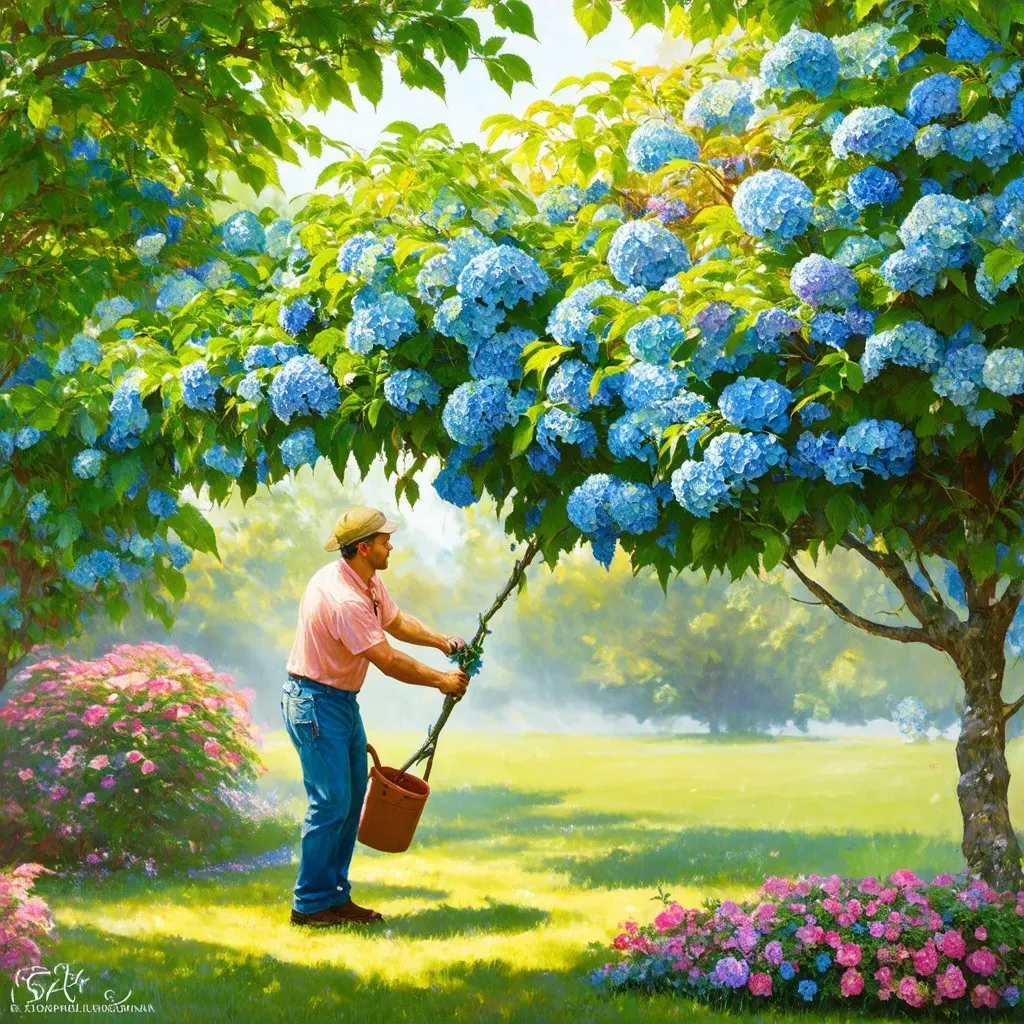Keyword: how to prune overgrown hydrangea tree
Pruning overgrown hydrangea trees can feel daunting, but with the right techniques and timing, it can be a straightforward process that rejuvenates your garden and ensures beautiful blooms for years to come. In this article, we will guide you through everything you need to know!
Understanding Hydrangea Growth Patterns
Before diving into the specifics of pruning, it’s crucial to understand the basic growth patterns of hydrangeas, particularly the macrophylla variety, which is one of the most popular. Unlike Other plants, hydrangeas can develop woody stems that may become overgrown, creating a dense thicket that could hinder blooming.
Hydrangea Type and Blooming
Hydrangeas can be categorized into several types, notably:
- Bigleaf (hydrangea macrophylla)
- Panicle (Hydrangea paniculata)
- Smooth (Hydrangea arborescens)
- Mountain (Hydrangea macrophyllah)
- Oakleaf (Hydrangea quercifolia)
Each type has its unique blooming season and pruning needs, making it essential to identify which variety you are dealing with.
| Hydrangea Type | Blooming Season | Pruning Time |
|---|---|---|
| Bigleaf (macrophylla) | Summer | Late summer |
| Panicle (paniculata) | Late summer | Early spring |
| Smooth (arborescens) | Summer | Late winter/early spring |
| Mountain (macrophyllah) | Late summer | Early spring |
| Oakleaf (quercifolia) | Summer | Late summer |
Signs Your Hydrangea Needs Pruning
An overgrown hydrangea tree generally exhibits the following signs:
- Dense growth and crowding in the branches
- Lack of blooms in certain areas, especially the interior
- Long and leggy stems that are visually unappealing
Identifying these signs will indicate that it’s time to assess your pruning strategy.

When to Prune Hydrangea Trees
The timing of your pruning has a significant impact on flower production. Below are optimal pruning schedules by hydrangea type:
Pruning Schedule
- Bigleaf Hydrangeas: Late summer after blooming.
- New Wood Varieties (like Panicle Hydrangeas): Early spring, before new growth begins.
- Old Wood Varieties (like Oakleaf): Late summer, after flowering.
By adhering to these schedules, you’ll ensure that you don’t cut off the flower buds that develop on last year’s growth.
Reference Video
Step-by-Step Guide to Pruning Overgrown Hydrangeas
Tools You Will Need
- Sharp, clean pruning shears: (to prevent disease)
- Loppers: (for thicker branches)
- Gloves: (to protect your hands)
- Safety goggles: (optional, but recommended)
Once you have the right tools, follow these steps:
-
Assess the Plant: Stand back and observe. Look for dead, damaged, or crossed branches—these should be removed first.
-
Start with Dead Wood: Prune away any dead or unhealthy branches at their base. This encourages new growth.
-
Thin Out the Canopy:
- Remove any overlapping branches.
- Aim to prune back about one-third of the plant, starting with the oldest stems.
-
Shape the Tree: Trim back spindly branches to encourage fuller growth. Aim for a balanced shape.
-
Cut Back Suckers: Eliminate any suckers emerging from the base as they can weaken the main trunk.
Advanced Pruning Techniques
For those looking to get more technical with their hydrangea pruning, consider these methods:
- Hard Pruning: If the tree is extremely overgrown, you may perform a hard prune, which involves cutting back to about 6-12 inches from the ground. This is only recommended for healthy plants during springtime.
- Deadheading: After blooming, remove the spent flowers to promote a tidy appearance.

Caring for Pruned Hydrangeas
Pruning is just the beginning. After you’ve trimmed your hydrangeas, make sure to continue care:
Post-Pruning Care
- Watering: Ensure the plant receives adequate water during the growing season.
- Mulching: Apply a layer of mulch to retain moisture and suppress weeds.
- Fertilizing: Use a balanced fertilizer in early spring to promote healthy growth and flowering.
Common Mistakes to Avoid
- Cutting Too Late: Pruning late in the season may prevent blooming.
- Overpruning: Removing too much can shock the plant, harming its growth.
FAQs About Pruning Hydrangeas
1. How often should I prune my hydrangea tree?
It is typically recommended to prune hydrangea trees annually to maintain shape and health, timing varying by species.
2. Can I prune in the fall?
While light trimming is acceptable in the fall, extensive pruning should be avoided to prevent damage from winter weather.
3. What should I do with the cuttings?
Consider composting healthy cuttings; however, diseased wood should be disposed of properly.
4. why are my hydrangeas not blooming?
Improper pruning can remove flower buds. Ensure you research your specific hydrangea type to optimize blooming.
5. Where can I find more information on pruning hydrangeas?
For additional resources, Gardening Know How offers extensive information on various gardening topics, including hydrangeas.
By adhering to the guidelines outlined above, you can successfully prune your overgrown hydrangea tree and breathe new life into your garden. Happy gardening!



